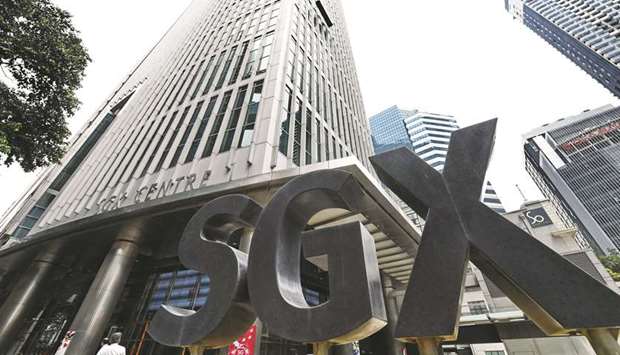With almost two months of the year to run, the Straits Times Index has already notched up its best annual performance since 2012 amid an economic recovery and a stronger currency.
The city-state’s equity funds received some $2bn in 10 straight months of inflows, the most annually since 2007, according to data from asset allocation tracking company EPFR Global. That’s more than the combined inflows of the past five years and the longest monthly rally since mid-2013, the data show.
The city-state has posted solid growth in the past two quarters as global trade continues to rebound, supporting its export-oriented economy. The central bank said last month the country’s economic growth will probably come in at the upper half of the 2% to 3% forecast range, its fastest rate since 2014. The property market has shown signs of a turnaround, while banks have benefited from stronger lending and improved interest margins.
“There has been increased interest in Singapore given its positive leverage to global growth and reflation,” said Desmond Loh, a fund manager at JP Morgan Asset Management. “Apart from an improvement in stock-specific fundamentals, strong export performance coupled with low inflation has also led to a gradual strengthening of the Singapore dollar,” he said, adding that expectations of further strength in the currency could be supportive of additional inflows.
The Singapore dollar has gained more than 6% versus the greenback this year, set for its first annual appreciation since 2012. The Straits Times Index fell 0.1% at the close in Singapore, tracking declines in Asian markets, after rising as much as 0.2% earlier.
DBS Group Holdings, Oversea-Chinese Banking Corp and United Overseas Bank, the three local banks which account for almost 40% weighting in the benchmark stock gauge, have led the rally as they benefit from rising income from wealth management and lending. That’s helped offset the impact of bad loans in the energy-services industry. Analysts forecast the banks will to be able to charge clients more for loans in 2018 as domestic interest rates, which are partly driven by the outlook for US rates, continue rising.
Property stocks have also outperformed the benchmark index’s 19% gain in 2017, with developers such as City Developments Ltd and UOL Group advancing 45% and 47% respectively. En-bloc sales, or redevelopment deals, have exceeded S$5bn ($3.7bn) this year, the most since 2007, according to OCBC, and home prices rose for the first time in four years in September.
“In the past two years, there has been a lot of turbulence in the Asian region, Singapore as one of the more exposed economies had been skipped over by investors for other growth regions,” said Jingyi Pan, a market strategist at IG Asia Pte. “But this year, given the broad-based growth in the Asian region, that’s contributing to some of the optimism” for Singapore stocks, she said.
Even so, Singapore stocks are the cheapest in Southeast Asia as the equity gauge trades at 14.2 times estimated earnings for the next 12 months, compared to its Malaysian and Philippine counterparts at 15.3 times and 18.3 times respectively.
The benchmark equity gauge is likely to keep rising till July next year if earnings continue to grow and there are no external shocks, according to Andrew Chow, head of research at United Overseas Bank’s brokerage unit. The gauge could reach 3,730 by the end of 2018 if earnings surprise on the upside, he wrote in a note this week.
Kenneth Tang, who helps manage $184.1bn at Nikko Asset Management, sees “more subdued” returns in 2018.
“We are still positive, but we have moderated some expectations for certain companies that have already done very well,” he said. As property, financials and technology stocks tend to be the first to rally in an economic upturn, companies that are more mid-cycle such as capital goods and industrials are likely to get “more tailwind of growth” in 2018, he said.
For JPMorgan’s Loh, banking and property stocks can still continue to rise as fundamentals improve and valuations are “still reasonable”.
“Banks in particular could see higher dividends as they look to potentially shed excess capital, while recent landmark land transactions suggest that property developers have become more confident of the property market outlook,” he said.
A frontal view of the Singapore Exchange building. The city-state’s equity funds received some $2bn in 10 straight months of inflows, the most annually since 2007,
according to data from asset allocation tracking company EPFR Global.

